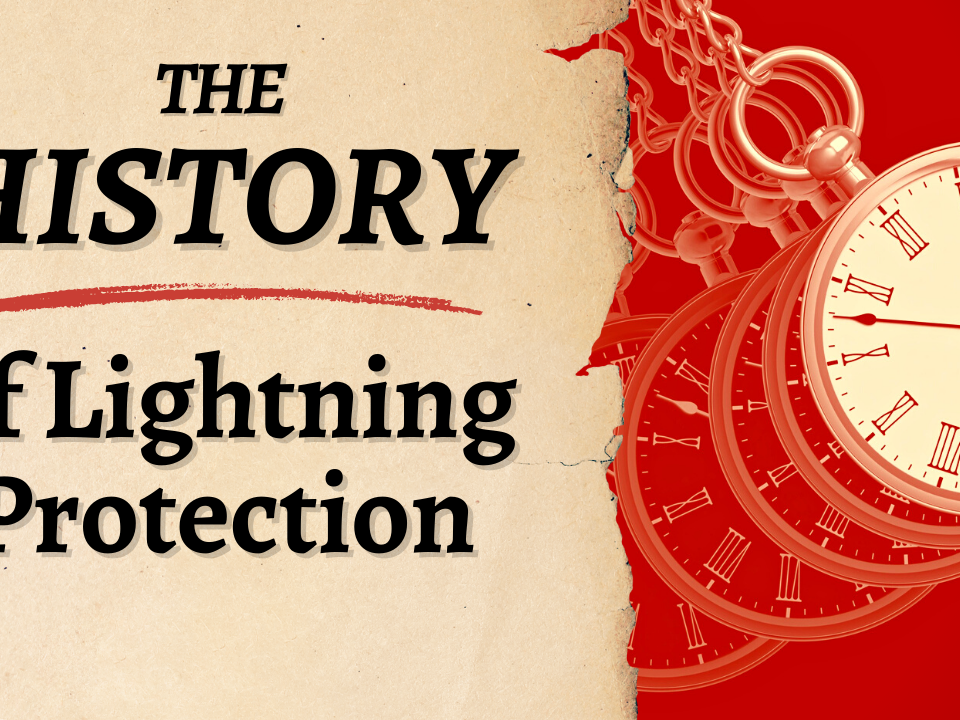- We Prevent Lightning Related Problems.

LEC Wins International Business Award
August 16, 2012Damages Rise when Substations Don’t Invest in Lightning Protection
August 30, 2012Lightning: The Risk Less Considered
Over the past several years, the declining economy has yielded some unexpected results. Companies now survive by squeezing out excess capacity and redundancy from manufacturing and other systems by closing down factories and consolidating work to cut costs. Therefore what is left becomes even more imperative in the daily operations. Downtime at the remaining operating facilities can now have a more disastrous effect. Whether it be downtime related to sensitive electronic computer systems, phone lines, expensive electronic command and control systems, data, security, machinery or deliveries, the loss of productivity can cost companies thousands of dollars in a single day, depending on the industry and the severity of the downtime. For example, lightning strikes are a primary cause of fires for petroleum storage tanks used in the energy, chemical and utilities industries, and the damage from those strikes is often significant. When lightning strikes a facility resulting in damages, downtime, loss of productivity, or even worse- loss of human lives, but could have been easily prevented, (with lightning protection and prevention solutions) it is almost inexcusable. That is why more companies are taking greater notice of the potential impact of lightning and lightning related events as it affects their ability to continue operations.
Lightning is one of the primary natural causes of business interruption and is more often than not attended to after the fact. Making a decision to protect your facility in hindsight can be very costly and in many cases have cost companies millions of dollars risk management and business continuance have become a high priority among businesses over the past decade. Organizations are looking for ways to minimize, monitor and control the probability or impact of unplanned, unfortunate events. These events range from financial crisis and project failures to legal liabilities, accidents and natural disasters. Over the past 20 years in the US alone, the average annual damages from natural disaster totals over $30 billion, $5 Billion of which is known to be caused by lightning. About 258 million people are affected by natural disasters each year – from tornadoes, hurricanes, earthquakes and tsunamis to floods, droughts, fires, landslides and pandemics. Many of these unfortunate events are related to extreme weather, such as lightning, and climate changes. Some climate change researchers predict as much as a 6% increase in lightning strikes for every degree of global temperature change. In a number of industries, it is very easy to see why companies take a proactive stance.
The National Fire Protection Association (NFPA) developed a lightning risk assessment program that many companies undergo when evaluating their need for lightning protection. The many variables and factors of this assessment include, but are not limited to: type of structure, geographical location, lightning density, and the impact lightning might have on the environment and personnel. When not protected, lightning poses many real threats for companies, such as loss of human lives, loss of public safety and huge economic losses.
The fact is, negative effects of direct and indirect lightning strikes can be greatly minimized. Lightning is one of the only forms of natural disaster that can be diverted, if companies stay ahead of the game by implementing the correct technology and strategies, ultimately saving companies and organizations thousands of dollars in the event of a lightning storm. Utilizing lightning protection and prevention technologies is a cost-effective approach for risk management because it ensures that companies looking to do more with less can stay ahead of the game. Discouraging strikes ends up being a significant benefit to the companies looking to effectively manage risk. In fact, it is a preferred route to lightning protection in a number of industries where lightning strikes pose a threat, including the information technology, nuclear energy, biochemical and manufacturing fields.
Lightning Protection Solutions
Lightning Eliminators & Consultants, Inc. (LEC) specializes in providing integrated lightning protection and prevention products, solutions and services by utilizing innovative patented charge transfer technology, grounding systems engineering, surge protection design, and providing comprehensive consulting services based on physics and state of the art engineering principles. LEC provides the only No Strike Warranty in the industry on our DAS™ solutions. When installed, maintained and supervised by LEC, our DAS™ prevents direct strikes with a 99% success rate, minimizing the risks to facilities and operations. The benefits can be substantial, resulting in a healthier bottom line by reducing downtime, maintenance and repairs, while increasing reliability and safety.
Roy B. Carpenter, Jr., a former chief engineer for NASA’s Apollo Moon Landing Missions and the Space Shuttle design engineering teams, founded LEC in 1971 to study and apply engineering principles to lightning protection. His unique charge transfer process – the patented technology used in the LEC DAS solution – reduces the rapid transfer of electrons that occurs with lightning into a slow drip by pushing storm-induced electric charge up into the atmosphere, above a protected site. With more than 40 years of lightning protection success, LEC is able to issue a full no-strike warranty to each of its DAS customers, as long as proper maintenance is observed.
If your facility needs to be evaluated for lightning protection and prevention solutions, LEC can help. Our team of highly trained engineers and solution specialists continuously consults companies and facilities to help them understand their current situation, conduct a lightning risk assessment, give recommendations and cost estimates.

